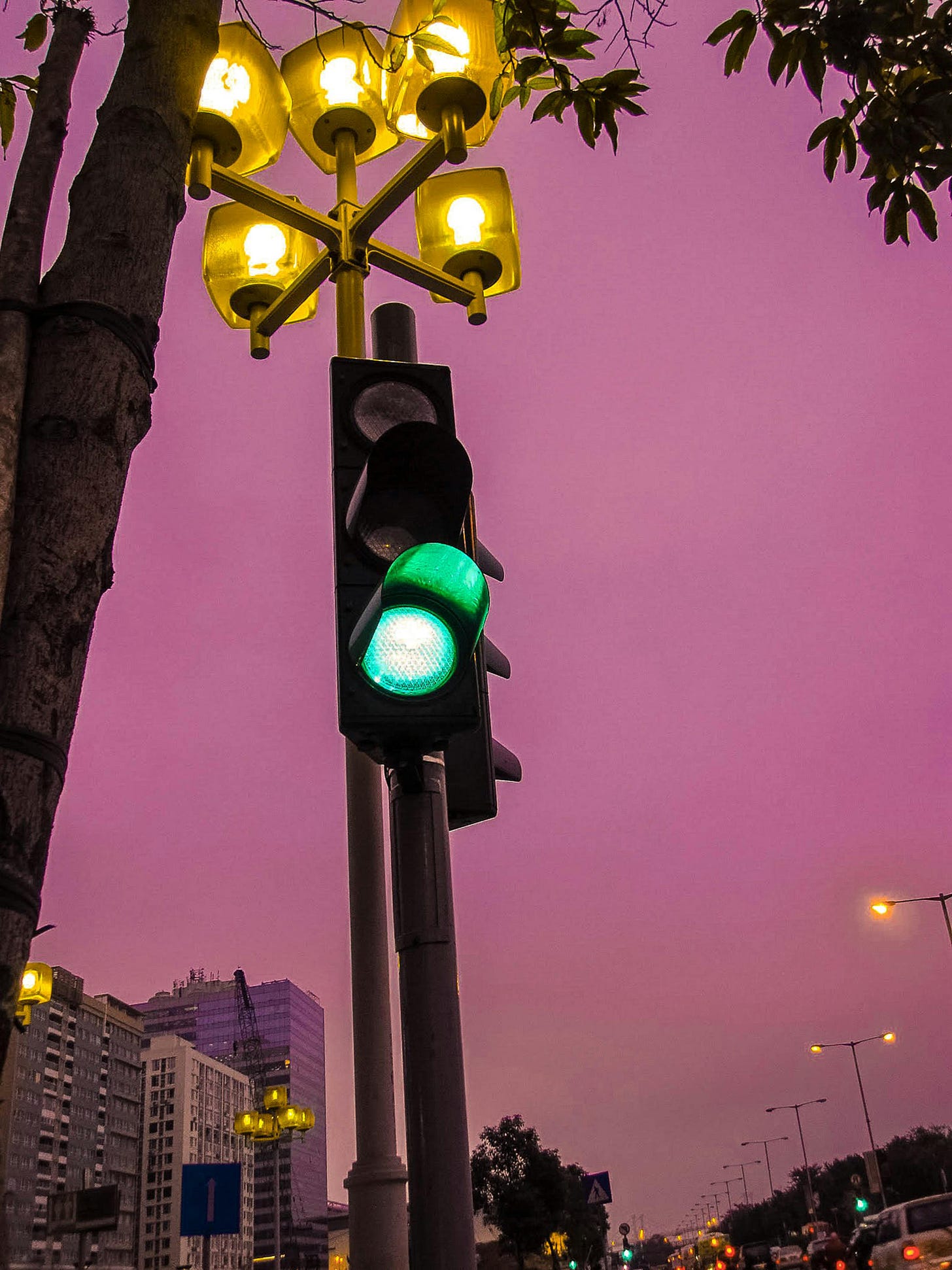Why Are Traffic Lights Called "Blue" in Japan?
A Curious Blend of History, Language, and Culture
The Mystery of the "Blue" Traffic Light
One of the small yet puzzling things I noticed after returning to Japan was how we call the green traffic light “aoi shingō” (青信号), or “blue signal.”
I mean, it’s obviously green, right?
At first, I thought it was just a quirky Japanese expression. But after digging a little deeper, I found out there’s a real historical and linguistic reason behind it. And once you learn the backstory, it actually makes a lot of sense.
Why Does "Blue" Include Green in Japanese?
Back in the day, the Japanese language didn’t distinguish between blue and green as clearly as English does. Instead, colors were categorized into four main groups:
Shiro (白) – White
Kuro (黒) – Black
Aka (赤) – Red
Ao (青) – Blue (but also green!)
Because of this, "ao" (青) used to cover shades of green as well. Even today, you can still see traces of this in everyday words like:
Aoba (青葉) → Green leaves
Aoringo (青リンゴ) → Green apple
Aona (青菜) → Green leafy vegetables
So, calling a traffic light "blue" isn't completely random—it's just a remnant of old Japanese color classification.
How Traffic Lights Became "Blue"
Japan’s first traffic lights were introduced in the Taisho era (1912–1926). At the time, “green” wasn’t widely used as a separate color term, so people naturally called the lights "blue."
Fast forward to post-World War II, the word "midori" (緑, green) became more common, and there was a push to align with international standards by calling the signal "green." But by then, "aoi shingō" was already deeply ingrained in everyday language. Changing it would have been like trying to rename the sun.
The compromise? Make the green light look more blue.
Yes, Japan’s traffic lights today are intentionally a slightly blueish shade of green to match the language. While the rest of the world sees a standard green, in Japan, we’ve got a uniquely “bluish-green” signal.
Why This Is So Interesting
Japan historically grouped green and blue together → That’s why words like "aoba" (green leaves) still exist today.
Once a linguistic habit sticks, it’s hard to change → Even an official push to call it "midori shingō" (green signal) didn’t catch on.
The traffic lights were literally adjusted to be more "blue" → Instead of changing the language, the solution was to change the lights themselves!
At first, I found it strange that we call a green light "blue." But now, I see it as one of those fascinating cultural and linguistic quirks that make Japan unique.
What do you think? I imagine you had a “Wow, that makes sense!” moment while reading. In fact, I felt the same way while writing this. More than anything, learning about the historical background made me appreciate the depth of the Japanese language all over again.
I usually write about startups and investments, but this time, I wanted to put into words something that personally caught my interest or made me curious. Moving forward, I’d like to randomly post about personal topics and other subjects beyond what I usually write about. This article marks the very first step in that journey!
Next time you’re waiting at a traffic light, take a closer look—does it seem a little more blue than usual? Now you know why.


